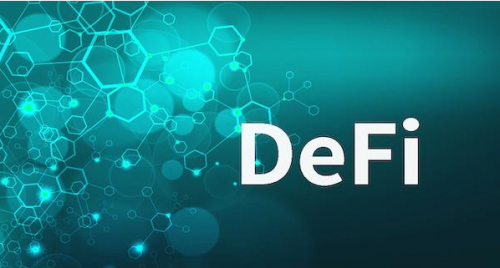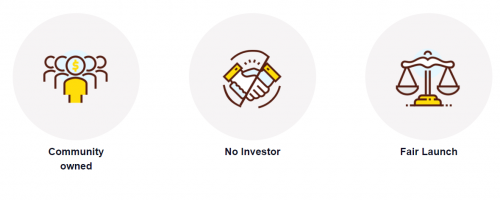In 2020, the Defi industry has many representative products, such as Dex represented by Uni, lending represented by Aave and Compound, and income aggregator represented by YFI. And this round of enthusiasm in the Defi industry has also detonated the enthusiasm of the entire cryptocurrency market.
In benchmarking the traditional financial industry, the basic business of a bank is lending, which can greatly increase the utilization rate of funds, which also contributes to the huge market value of the bank. From this perspective, the author believes that DeFi lending products will also be one of the important infrastructures for decentralized financial applications.

At present, the well-known DeFi project Compound and Aave loan agreement on the market mainly follow the "mortgage loan" rule. To put it simply, it is the amount of loanable funds that the borrower needs to deposit assets as collateral, and is calculated based on the credit value of the user's collateral. Almost all loans in DeFi currently require over-collateralization. This means that if users want to borrow funds, they must provide tokens as collateral, and the value of these tokens is higher than the loan they actually want.
For example, a user who uses a digital asset A worth 150 USD as collateral can lend a digital asset B worth 100 USD. This situation generally occurs when the user is bearish on digital asset B and optimistic about digital asset A , The user can lend the digital asset B to sell arbitrage at a high position, and buy and repay at a low position, thereby making a profit.
This model is adopted because both collateral and loan assets have price fluctuations, so it is necessary to reserve space for liquidation to withstand market risks. This is a common model currently adopted by lending products in the DeFi market, but this has brought an obvious side effect-extremely low efficiency in the use of funds. In the lending agreement, the person who always borrows money is actually not short of money, which constitutes a speculative act of trading.
At the same time, a problem that needs to be solved urgently for current lending products is that there are many users with market forecasting capabilities who need more available funds, and they have a strong willingness to participate in DeFi mining and earn profits. The inflow of assets into this part requires the hands of customers, which can greatly increase the utilization rate of assets.
In response to this pain point, excess lending products have emerged. For example, the Rabbit Finance agreement will be launched soon. Rabbit Finance is an intelligent protocol based on decentralized excess lending released by Rabbit Finance Lab. It supports users to participate in liquidity mining through excess lending and leverage to obtain greater benefits. The Binance smart chain BSC has been launched. When users want to participate in the liquidity mining of DeFi projects and suffer from insufficient funds in their hands, Rabbit Finance can provide up to 10 times the borrowing leverage to help users get greater returns per unit of time.

When it starts, Rabbit Finance will support the two basic assets of BNB and BUSD and integrate with PancakeSwap. Users can participate in Rabbit Finance as the following different roles.
Lender: Earn income by depositing basic assets in a vault. These assets are then provided to farmers to increase their positions. The lender earns interest by providing liquidity.
High-yield farmers: Open leveraged positions in Rabbit Finance to get higher returns.
Liquidator: Monitor the investment list of platform users and liquidate them when their debt ratio exceeds the liquidation system.
Re-investors: Monitor the number of rewards received in each pool on the re-investment page and help reinvest them to increase returns for all farmers. After the reinvestors select the pool to reinvest, 30% of the pool rewards will be used as the platform's repurchase and destruction fund to deflate the RABBIT and increase the value of the tokens, 0.4% will be given to the reinvestors, and 69.6% will be replaced by the pool’s LP to pledge investment again.
By comparing the product mechanism of Rabbit Finance, we can see that while taking into account user benefits, developers also fully consider user experience and truly make users "less operations, more benefits." Compared with other Defi lending products, Rabbit Finance not only provides ten times leveraged lending, but also introduced a reinvestment mechanism. Reinvestors can operate the pool list at any time for reinvestment and convert them to LP tokens that are being mined. It is added to the mining pool. Leveraged mining will be simpler, and many complex steps can be completed automatically by the agreement. It can also maximize the user's profitability on the basis of reducing user operations.
In addition to innovations in lending leverage and mining mechanisms, Rabbit Finance also provides more application scenarios and functions for its governance token RABBIT through economic model design. RABBIT tokens are not only used as the governance equity token for leveraged mining platforms, but also as the shareholder equity token for the algorithmic stable currency RUSD. Whenever RUSD inflation is issued, members who pledge Rabbit tokens to the board of directors will share the additional RUSD as dividends and share the benefits of ecological growth.
Holders of RABBIT tokens can vote for decisions in the governance library. The community can also decide how they want RABBIT tokens to obtain financial incentives, for example, it may be similar to Sushiswap, where a part of the fees incurred is used to perform token buybacks and burning. In fact, after the agreement was officially launched, there have been multiple mechanisms to make RABBIT naturally deflate and generate value through deflation. For example, in the reinvestment mechanism, 30% of the reinvestment income is used to repurchase funds. Through the empowerment of governance tokens and the deflation mechanism, RABBIT tokens are better anchored in value, and RABBIT token holders can share the long-term dividends of platform growth.
In addition, Rabbit Finance not only hopes to be a lending product, but also hopes to better empower the crypto world. Based on the current popularity of the NFT market, the NFT artwork panic buying function has also been planned. The NFT snap-up method is to lock the warehouse to snap up. You can use the governance token Rabbit to snap up the NFT artwork that is released from time to time. Holding the NFT can speed up mining, and then bring a positive cycle.
While Rabbit's lock-up reduces circulation, it also gives NFT more value and provides participants with more arbitrage opportunities.
To sum up, Rabbit Finance has the following highlights
Product experience innovation: It can support up to 10 times leverage, and a reinvestment mechanism has been added to the strategy, which allows users to operate less and maximize returns
Economic model innovation: Governance tokens are given more application scenarios and value through pledged dividends, and at the same time, the continuous deflation of tokens is realized through repurchase
Add more ways to play: Increase the NFT artwork snap-up function, you can use Rabbit to snap up NFT artwork that is released from time to time to realize Rabbit's indirect lock-up. Holding NFT can accelerate mining and use tokens to empower NFT value.

From this point of view, whether users with higher risk appetites use leveraged loans on Rabbit Finance to obtain higher returns per unit of time, or stable users earn interest and pledge mining income through borrowing pools, or through holding There are RABBIT tokens to enjoy the dividend rights, which are all worth considering.
The development of Defi has greatly lowered the threshold for financial participation, and the roles in the traditional financial system will be reproduced one by one in the world of decentralized finance. Compared with the huge market value of the traditional financial industry, Defi can be said to have just started, and there is still a long way to go and more room for imagination. What is the next killer application in the Defi industry after decentralized exchanges and lending platforms? Perhaps the Leveraged Yield Farming platform represented by Rabbit Finance is a strong competitor.